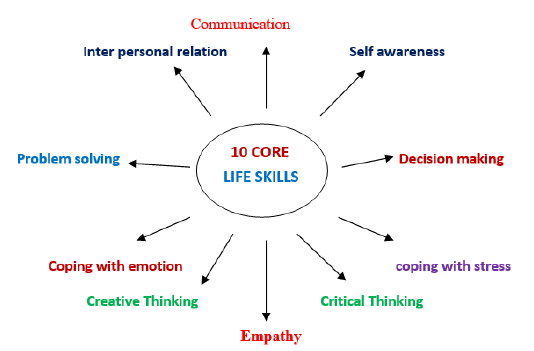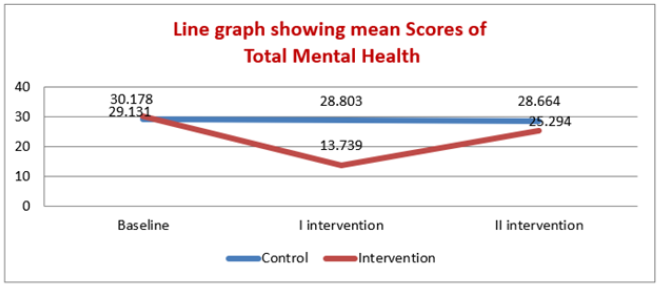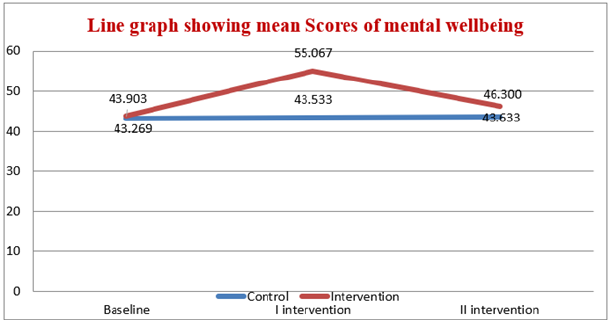- Submissions

Full Text
Research in Pediatrics & Neonatology
Impact of Life Skill Training Program on Mental Health and Wellbeing of Adolescents
Jessy Mavarayil John1,2*
1Head of the Department of Psychiatric Social Work, Kusumagiri Mental Health Centre, Cochin, Kerala, India
2Student Counsellor / Mental Health Professional, Department of Guidance and Counselling Services, Bharata Mata School of Legal Studies, Cochin, Kerala, India
*Corresponding author: Jessy Mavarayil John, Head of the Departmentof Psychiatric Social Work, Kusumagiri Mental Health Centre, Student Counsellor/ Mental Health Professional, Department of Guidance and Counselling Services,Bharata Mata School of Legal Studies, Cochin, Kerala, India
Submission: July 07, 2022; Published: October 14, 2022

ISSN: 2577-9200 Volume7 Issue1
Abstract
The aim of the study is to assess the impact of life skills training on mental health and wellbeing of adolescents. A classical experimental research design with control group and random sampling method were used. The study population comprises 720 adolescents (both girls and boys in the age group of 16 to 19yrs) from six higher secondary schools in Ernakulam Educational district of Kerala, India. The respondents were selected on the basis of inclusion and exclusion criteria. Informed written consent was obtained from the participants prior to the study. The respondents were sequentially assigned into intervention group and control group with 360 each for determining the effect of the intervention comparatively. The standard tools administered to evaluate the mental health status and wellbeing in three timelines are: GHQ-28 [1] and WEMWS-14 [2] respectively.
Researcher conducted life skills training to the intervention group after pre-intervention. The same assessment tools were administered for post-intervention (one-three months) and follow-up intervention (six-nine months) to evaluate the impact of intervention on mental health and wellbeing. The current version of Statistical Package for Social Sciences (SPSS) was used to analyze the data and correlations were obtained. Repeated Measures Analysis of Variance (RMANOVA) was performed to test whether there is any significant effect due to intervention in the scores. Independent sample t-test was used to compare the equality of baseline scores of various components. Data were analyzed by descriptive and inferential statistics in three timelines under different sections. The result shows that there was highly significant intervention effect between the scores of mental health and wellbeing. The p value is less than 0.05 (normal value) the null hypothesis rejected, and alternate hypothesis accepted i.e., intervention is effective.
Keywords: Mental health and wellbeing; Life skill training; Adolescents
Introduction
Childhood and adolescence are critical periods for laying the foundations for good mental health and wellbeing and it affect their path through life. It is vitally important for the healthy functioning of families and society as a whole. How to promote mental health and wellbeing of people across the life course from birth to old age is a challenging question [3]. Poor mental health in childhood is associated with increases the risk in life and other adverse outcomes in adulthood [4]. Many of the mental health programs implemented in schools promote the development of social skills and learning outcomes while at the same time reducing disruptive behavior and promote mental health and wellbeing of young people [5].
Young people today are caught up in an identity crisis, one which is not easy to define. According to Erikson’s definition, “crisis does not mean breakdown or catastrophe but rather a ‘crucial period’ when stable reference points in and around the young person must be established”. Young people cannot wait, because it is a period which is fleeting [6]. India has the largest youth population in the world with around 550 million, and 70% of the population is below the age of 35 years. At the same time, the burden of mental health problems and behavioral disorders ranged from 9.5 to 102 per 1000 population [7]. This pool needs to be engaged in the mainstream development of the country, that they may be able to contribute the best for nation building. In this particular context, the researcher would like to share the experiences and findings of the current study.
Research Methodology
Aim / general objective
To study the Impact of Life Skill Training program on Mental health and wellbeing of Adolescents.
Intervention program at a glance
In a constantly changing environment, having life skills is an essential part of being able to meet the challenges of our life [8]. Life Skills are abilities for adaptive and positive behavior that enable individuals to deal effectively with the demands and changes of everyday life (Figure 1).
Figure 1:Ten core life skills that are relevant across culture are the following.

Result
The following tables and figures explain the detailed result of the study (Based on the analyzed data-in three timelines) Table 1 & 2. The above table describes the extent of change in the Mental Health Scores among the respondents across the time period of Pre- intervention (baseline), post-intervention and follow-up intervention, between the intervention group and control group. Higher scores represent lower level of Mental Health Status. Since p-value (value of p=0.000) is less than 0.05 (normal value) for the main effect of Mental Health score over different time periods, there is significant difference in the overall mean score of Mental Health scores in two groups due to intervention i.e., null hypothesis rejected and alternate hypothesis accepted, it can be concluded that intervention is effective. The line chart Figure 2 shows that, the differences in the average scores are more for control group whereas for intervention group they are not.
Table 1: Results of RMANOVA for mental health scores.

Table 2:Results of RMANOVA for Mental Wellbeing Scores.

Figure 2:Mean score of mental health status.

The above table describes the extent of changes in the mental wellbeing scores among the respondents across three timelines between intervention group and control group. Higher scores represent higher level of mental wellbeing. The results tabulated shows that there is significant difference between the two groups because the p values are less than 0.05 for the between effect ‘Group’. There was highly significant interaction effect between the scores of Mental wellbeing over different time periods and between the two groups, with the value of p=0.000 for the data obtained. Hence null hypothesis rejected, and alternate hypothesis accepted and concluded that intervention is effective. The line chart Figure 3 shows that, the differences in the average scores are more for intervention group whereas for control group they are not.
Figure 3:Mean score of mental wellbeing.

Conclusion
The findings of the study clearly state that, life skills training has positive impact on mental health and wellbeing of adolescents. In the case of mental health, it can be noticed that the average score is in its maximum at the baseline (pr-intervention level), then reduced to minimum at the post-intervention level but increased again in the follow-up intervention level (i.e., lower score represents good mental health). But in the case of mental wellbeing score, it is reflected that, the average score is in its minimum at the baseline, then increased to maximum at post-intervention but decreased again in the follow-up intervention level (higher score represents good wellbeing). The scores of two questionnaires [1,2] are inversely related/negatively correlated at 0.01 level of significance, giving the desired result. All the scores are highly significant in post-intervention period; this emphasizes the need for continuous/ periodic intervention. It is leading to the conclusion that life skills training has positive impact on mental health and wellbeing of adolescents.
References
- Goldberg DP(1997) General health questionnaire-28 (GHQ-28), Indian Version, Prasad Psycho cooperation, New Delhi, India.
- (2007) Warwick-Edinburgh Mental Well-being Scale-WEMWBS-14, USA.
- Kessler RC, Berglund P, Demler O, Jin R, Kathleen R, et al. (2005) Lifetime prevalence and age of onset distributions of DSM-IV disorders in the national co-morbidity survey replication. Arch of Gen Psych 62(6): 593-602.
- Kieling C (2011) Child and adolescent mental health worldwide: Evidence for action. Lancet 378(9801): 1515-1525.
- Durlak JA, Weissberg RP, Dymnicki AB, Taylor RD, Schellinger KB (2011) The impact of enhancing students’ social and emotional learning: A meta-analysis of school-based universal interventions. Child Dev 82(1): 405-432.
- Erickson E (1968) Erikson's major essays on topics originating in the concept of the adolescent identity crisis.
- Census India (2011) India population survey report.
- World Health Organization (2004) Promoting mental health; concepts emerging evidence and practice. Summary report. World Health Organization, Geneva, Switzerland.
© 2022 Jessy Mavarayil John. This is an open access article distributed under the terms of the Creative Commons Attribution License , which permits unrestricted use, distribution, and build upon your work non-commercially.
 a Creative Commons Attribution 4.0 International License. Based on a work at www.crimsonpublishers.com.
Best viewed in
a Creative Commons Attribution 4.0 International License. Based on a work at www.crimsonpublishers.com.
Best viewed in 







.jpg)






























 Editorial Board Registrations
Editorial Board Registrations Submit your Article
Submit your Article Refer a Friend
Refer a Friend Advertise With Us
Advertise With Us
.jpg)






.jpg)














.bmp)
.jpg)
.png)
.jpg)










.jpg)






.png)

.png)



.png)






